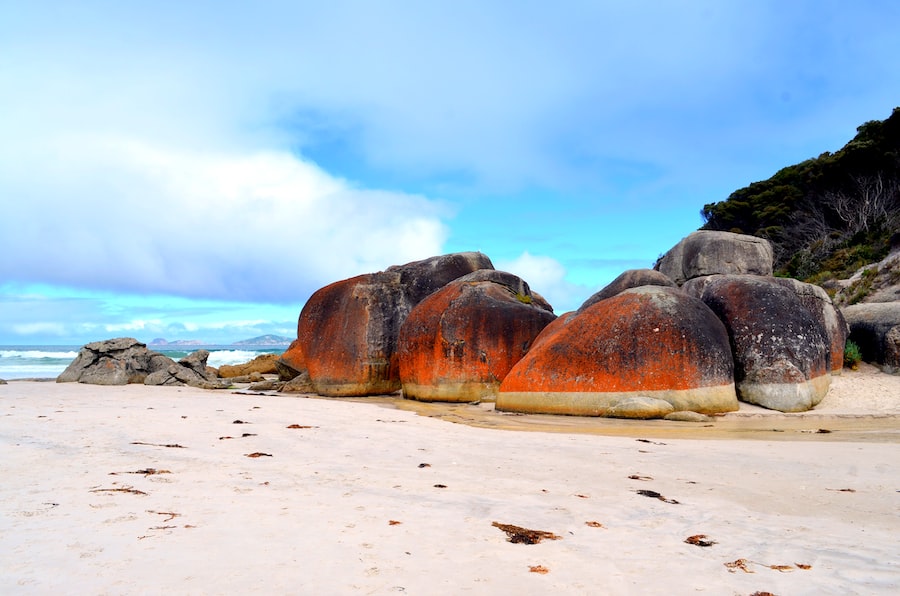Shady Oasis: Discover the Best Plants for Rock Gardens in Low-Light Conditions

A low-light rock garden is a garden that is designed to thrive in areas with limited sunlight. These gardens are typically found in shady areas, such as under trees or on the north side of a building. Growing plants in low-light conditions can be challenging, as many plants require full sun to thrive. However, with careful planning and the right plant selection, it is possible to create a beautiful and thriving rock garden in shady areas.
One of the main challenges of growing plants in low-light conditions is finding plants that can tolerate and even thrive in these conditions. Many plants require a minimum of six hours of direct sunlight per day to grow and flower properly. In shady areas, this can be difficult to achieve. Additionally, the lack of sunlight can lead to poor soil quality and drainage issues, which can further hinder plant growth. It is important to choose plants that are specifically adapted to low-light conditions in order to ensure their success.
Key Takeaways
- Low-light rock gardens present unique challenges for gardeners
- Choosing the right shade-tolerant plants is crucial for a successful shady oasis
- Top 5 shade-tolerant plants for rock gardens include ferns, hostas, heucheras, astilbes, and hellebores
- Design tips for creating a beautiful low-light rock garden include using contrasting textures and colors, and incorporating natural elements like rocks and logs
- Best practices for maintaining your shade-tolerant plants include proper watering, fertilization, and pest control
The Importance of Choosing the Right Plants for Shady Oasis
Choosing the right plants for a shady oasis is crucial for the success of your rock garden. Not all plants are able to tolerate low-light conditions, and attempting to grow sun-loving plants in shady areas will likely result in disappointment and frustration. By selecting shade-tolerant plants, you can ensure that your garden will thrive and provide you with years of enjoyment.
When selecting plants for a shady oasis, there are several factors to consider. First and foremost, you need to determine the amount of shade your garden receives. Some plants can tolerate deep shade, while others require at least some filtered sunlight. Additionally, you should consider the soil type and moisture levels in your garden. Some shade-tolerant plants prefer moist soil, while others prefer well-drained soil. By taking these factors into account, you can choose plants that are well-suited to your specific growing conditions.
Top 5 Shade-Tolerant Plants for Rock Gardens: A Comprehensive Guide
1. Hostas: Hostas are a popular choice for shady rock gardens due to their attractive foliage and low-maintenance nature. They come in a variety of sizes and colors, making them a versatile option for any garden. Hostas prefer moist, well-drained soil and can tolerate deep shade.
2. Ferns: Ferns are another excellent choice for shady rock gardens. They thrive in moist, shady conditions and add a lush, tropical feel to any garden. There are many different varieties of ferns to choose from, including maidenhair ferns, ostrich ferns, and Japanese painted ferns.
3. Bleeding Hearts: Bleeding hearts are a classic shade-loving perennial that adds a touch of elegance to any garden. They produce heart-shaped flowers in shades of pink or white and prefer moist, well-drained soil. Bleeding hearts can tolerate partial shade but may require some protection from the hot afternoon sun.
4. Astilbes: Astilbes are known for their feathery plumes of flowers in shades of pink, red, white, and lavender. They prefer moist soil and can tolerate partial shade. Astilbes are a great choice for adding color and texture to a shady rock garden.
5. Heucheras: Heucheras, also known as coral bells, are prized for their colorful foliage. They come in a wide range of colors, including shades of green, purple, orange, and silver. Heucheras prefer well-drained soil and can tolerate partial shade.
When growing these shade-tolerant plants in your rock garden, it is important to provide them with the proper care and maintenance. Most shade-loving plants prefer moist soil, so be sure to water them regularly. Additionally, it is important to provide them with adequate drainage to prevent root rot. Finally, be sure to monitor for pests and diseases, as shade-loving plants can be more susceptible to these issues.
Designing Your Shady Oasis: Tips and Tricks for Creating a Beautiful Low-Light Rock Garden
| Aspect | Metric |
|---|---|
| Plant Selection | Number of shade-tolerant plants |
| Rock Selection | Number of different types of rocks used |
| Layout | Number of different levels or tiers in the garden |
| Lighting | Number of low-light fixtures used |
| Maintenance | Frequency of watering and pruning |
When planning and designing a rock garden for shady areas, there are several tips and tricks to keep in mind. First, consider the layout and placement of your rocks. Rocks can help create visual interest and structure in your garden, so be sure to arrange them in a way that is visually appealing. Additionally, consider the size and shape of your rocks. Larger rocks can create a focal point, while smaller rocks can be used to fill in gaps and add texture.
In addition to rocks, consider incorporating other elements into your shady oasis. For example, you could add a small water feature, such as a fountain or pond, to add depth and interest to your garden. You could also add seating areas or pathways to create a sense of tranquility and invite visitors to explore your garden.
When selecting plants for your shady oasis, consider their height and growth habits. Taller plants can be used as a backdrop or focal point, while shorter plants can be used to fill in gaps and add texture. Additionally, consider the color and texture of the plants you choose. Variegated foliage or plants with interesting leaf shapes can add visual interest to your garden.
Maintaining Your Shady Oasis: Best Practices for Caring for Your Shade-Tolerant Plants
Caring for shade-tolerant plants in your rock garden is relatively straightforward, but there are a few best practices to keep in mind. First and foremost, it is important to water your plants regularly. Most shade-loving plants prefer moist soil, so be sure to water them deeply at least once a week. However, be careful not to overwater, as this can lead to root rot.
In addition to watering, it is important to fertilize your plants regularly. Shade-loving plants typically have lower nutrient requirements than sun-loving plants, so be sure to use a balanced, slow-release fertilizer. Apply the fertilizer according to the package instructions, and be sure to water it in thoroughly.
Finally, be sure to prune your shade-tolerant plants as needed. Pruning can help maintain the shape and size of your plants, as well as promote healthy growth. Remove any dead or diseased branches, and prune back any overgrown or leggy growth. Additionally, be sure to remove any weeds or unwanted plants from your garden regularly.
The Benefits of Low-Light Rock Gardens: Aesthetic Appeal and Environmental Impact

Low-light rock gardens offer several benefits, both in terms of aesthetic appeal and environmental impact. From an aesthetic standpoint, these gardens can add a touch of tranquility and beauty to any outdoor space. The combination of rocks and shade-tolerant plants creates a unique and visually appealing landscape that is sure to impress visitors.
In addition to their aesthetic appeal, low-light rock gardens also have several environmental benefits. By growing shade-tolerant plants in shady areas, you can help reduce soil erosion and runoff. Additionally, these gardens can provide habitat for wildlife, such as birds and butterflies. Finally, by using native plants in your rock garden, you can help support local ecosystems and promote biodiversity.
Overcoming Common Challenges in Shady Oasis Gardening: Pest Control and Soil Quality
One of the common challenges in shady oasis gardening is dealing with pests and diseases. Shade-tolerant plants are often more susceptible to pests and diseases than sun-loving plants, so it is important to be proactive in preventing and treating these issues.
Common pests that can affect shade-tolerant plants include slugs, snails, aphids, and spider mites. To prevent these pests from infesting your garden, keep your garden clean and free of debris. Additionally, consider using organic pest control methods, such as handpicking pests or using natural predators like ladybugs.
In terms of soil quality, shade-tolerant plants often prefer moist, well-drained soil. To improve soil quality in your shady oasis, consider adding organic matter, such as compost or leaf mulch. This will help improve soil structure and fertility, as well as promote healthy root growth.
Incorporating Water Features in Your Shady Oasis: Adding Depth and Interest to Your Rock Garden
Water features can add a sense of tranquility and beauty to any garden, and this is especially true in shady oasis rock gardens. By incorporating a small pond, fountain, or waterfall into your garden, you can create a focal point and add depth and interest to your space.
When incorporating water features into your shady oasis, it is important to consider the size and scale of your garden. A small pond or fountain can be a great addition to a small rock garden, while a larger waterfall or stream may be more appropriate for a larger space. Additionally, consider the placement of your water feature. It should be visible from multiple vantage points in your garden and should be easily accessible for maintenance.
In terms of maintenance, it is important to keep your water feature clean and free of debris. Regularly remove any leaves or other organic matter that may accumulate in the water. Additionally, be sure to check the water levels regularly and top up as needed. Finally, consider adding aquatic plants to your water feature to add color and texture.
Creating a Sustainable Shady Oasis: Using Native Plants and Organic Gardening Techniques
Creating a sustainable shady oasis is not only good for the environment but also for the long-term health and success of your garden. One way to create a sustainable garden is by using native plants. Native plants are adapted to the local climate and soil conditions, which means they require less water, fertilizer, and pesticides than non-native plants. Additionally, native plants provide habitat and food for local wildlife, helping to support local ecosystems.
In addition to using native plants, consider using organic gardening techniques in your shady oasis. Organic gardening involves using natural methods to control pests and diseases, as well as using organic fertilizers and soil amendments. By avoiding the use of synthetic chemicals, you can help protect the environment and promote the health of your plants.
The Enduring Beauty and Tranquility of Shady Oasis Rock Gardens
In conclusion, creating a shady oasis rock garden can be a rewarding and fulfilling experience. By understanding the challenges of low-light conditions and choosing the right plants for your garden, you can create a beautiful and thriving space that will provide you with years of enjoyment. From selecting shade-tolerant plants to designing your garden layout and maintaining your plants, there are many factors to consider when creating a shady oasis. However, with careful planning and attention to detail, you can create a garden that is not only visually appealing but also environmentally sustainable. So go ahead and create your own beautiful and tranquil shady oasis rock garden today!



